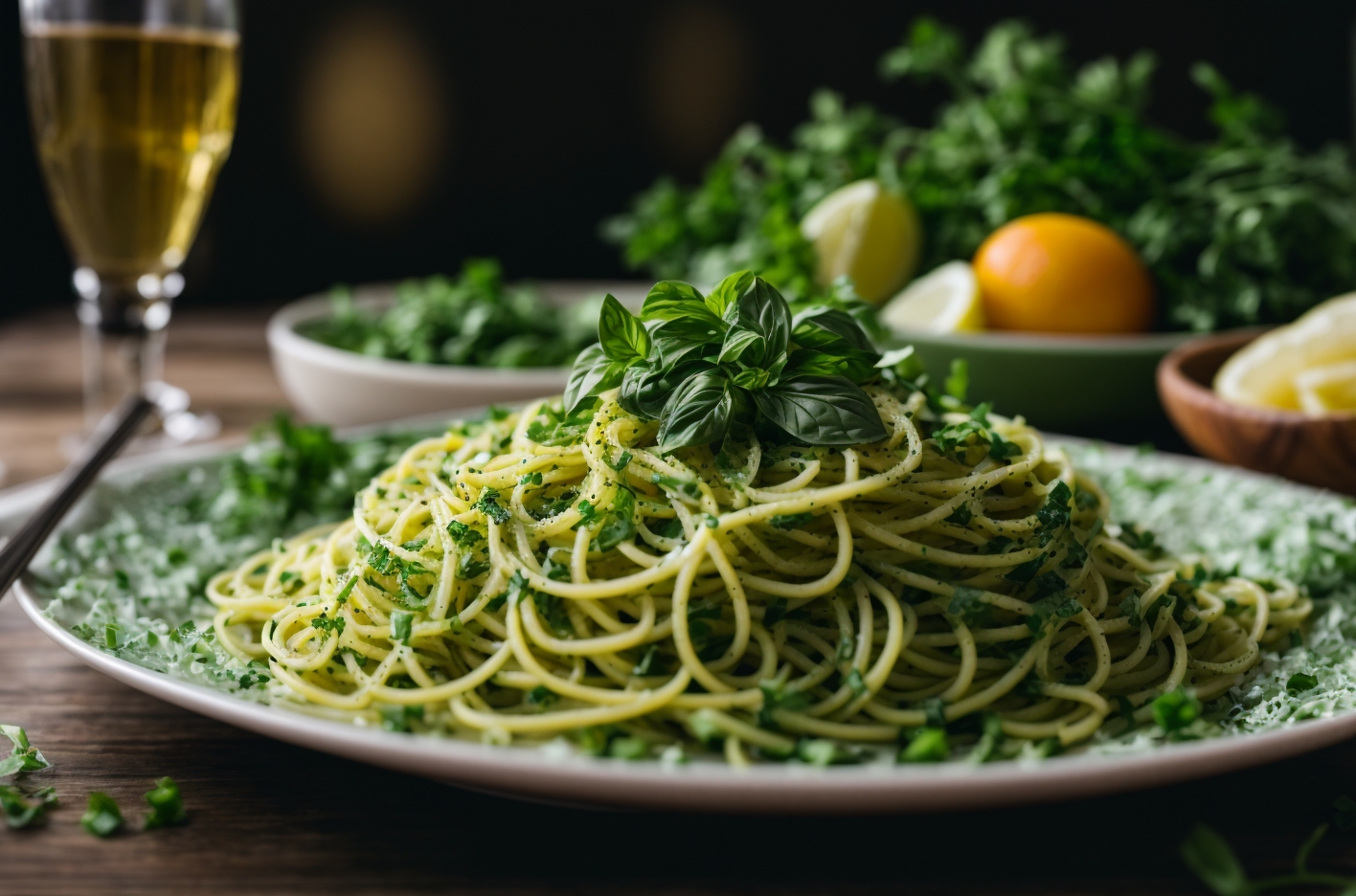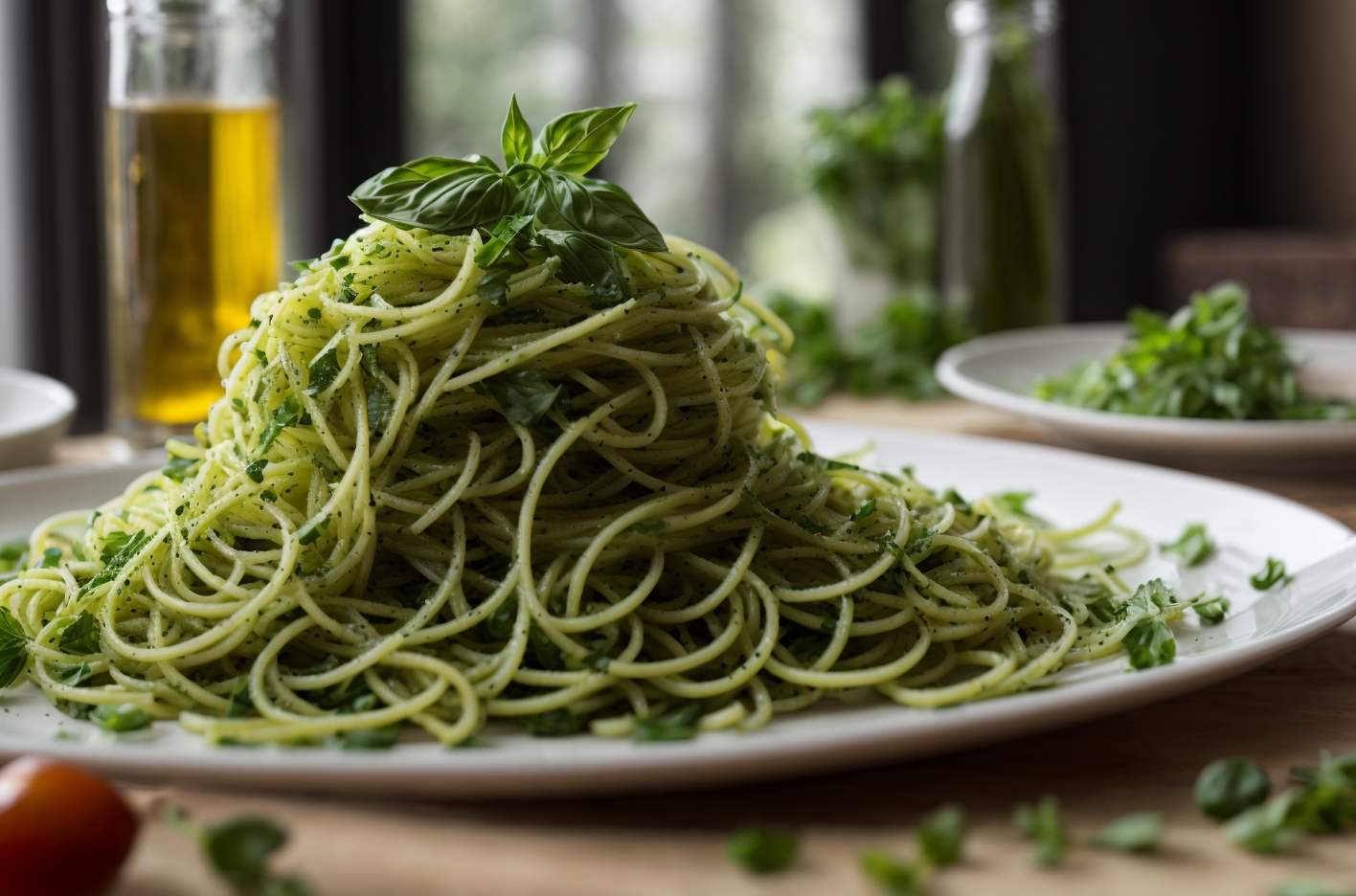green spaghetti
When you think of spaghetti, vibrant colors may not be the first thing that comes to mind. Traditionally, spaghetti is associated with a rich, red tomato sauce, or a creamy, white Alfredo. However, there’s a delightful twist that many are beginning to explore—green spaghetti! This dish is not only visually appealing but also a great way to incorporate more greens into your diet. In this article, we will dive deep into the world of green spaghetti, exploring its origins, variations, health benefits, and much more. So, grab your fork and let’s get twirling!
| Sr# | Headings |
|---|---|
| 1 | What is Green Spaghetti? |
| 2 | The Origins of Green Spaghetti |
| 3 | How to Make Green Spaghetti: Ingredients and Preparation |
| 4 | Variations of Green Spaghetti |
| 5 | Health Benefits of Eating Green Spaghetti |
| 6 | Pairing Green Spaghetti with the Right Sauces |
| 7 | Tips for Cooking Perfect Spaghetti |
| 8 | Frequently Asked Questions about Green Spaghetti |
What is Green Spaghetti?
Green spaghetti is a colorful and nutritious twist on the traditional Italian dish. Unlike its classic counterparts, green spaghetti features a sauce or ingredient that gives it a vibrant green hue. This is often achieved through the use of fresh greens like spinach, basil, or kale, blended into a sauce or incorporated directly into the pasta. The result is not just a feast for the eyes but a dish that’s rich in nutrients and flavor.
Imagine sitting down to a plate of spaghetti that not only tastes great but also looks fresh and inviting. It’s like bringing a slice of a summer garden to your dinner table! Green spaghetti can be a fantastic option for families, especially those trying to get more vegetables into their meals.
Have you ever noticed how the colors on your plate can affect your appetite? Just like a rainbow brightens the sky, colorful foods can enhance our dining experience, making it more enjoyable. In this case, green spaghetti adds a pop of color that invites curiosity and excitement.
The Origins of Green Spaghetti
While spaghetti itself hails from Italy, green spaghetti does not have a single definitive origin. Instead, it reflects a modern culinary trend of incorporating fresh ingredients into traditional recipes. As health consciousness grew, so did the desire to create dishes that are not only tasty but also nutritious.
The idea of adding greens to pasta can be linked to various Italian dishes that utilize pesto, a sauce made primarily from basil. The rich green color and fresh flavor of pesto led to the evolution of green spaghetti, where cooks began experimenting with different greens to create their unique versions.
Moreover, green spaghetti has gained popularity in various cuisines worldwide. For instance, in some Latin American countries, you might find a version made with green chili or tomatillo, showcasing the adaptability of this delightful dish. As we explore different cultures, we see how green spaghetti can be molded to fit diverse palates and preferences.
How to Make Green Spaghetti: Ingredients and Preparation
Making green spaghetti at home is simple and fun. You can personalize the ingredients based on your taste and dietary needs. Here’s a basic guide to get you started!
Ingredients
- Spaghetti: You can use regular wheat spaghetti or opt for whole wheat or gluten-free options.
- Greens: Fresh spinach, basil, kale, or a combination. These will provide the green color and vibrant flavor.
- Olive Oil: For sautéing and flavor.
- Garlic: Adds a rich aroma and taste.
- Parmesan Cheese: Optional, but it enhances the creaminess of the dish.
- Salt and Pepper: For seasoning.
- Lemon Juice: A splash can brighten the flavors.
Preparation Steps

- Cook the Spaghetti: Start by boiling a pot of salted water. Add the spaghetti and cook according to the package instructions until al dente. Reserve a cup of pasta water before draining.
- Prepare the Greens: While the pasta cooks, heat olive oil in a skillet over medium heat. Add minced garlic and sauté until fragrant.
- Add Greens: Add your chosen greens to the skillet. Sauté until wilted. For a creamier texture, you can add a splash of cream or some vegetable broth.
- Blend: If you prefer a smooth sauce, transfer the mixture to a blender. Blend until smooth, adding reserved pasta water as needed to reach your desired consistency.
- Combine: Toss the cooked spaghetti with the green sauce, ensuring every strand is coated. Season with salt, pepper, and lemon juice.
- Serve: Garnish with grated Parmesan cheese and additional greens if desired.
This recipe serves as a base, allowing you to experiment with different greens or add protein sources such as grilled chicken, shrimp, or chickpeas.
Variations of Green Spaghetti
As with any dish, there are endless ways to customize green spaghetti to fit your preferences. Here are some delightful variations to consider:
Pesto Green Spaghetti
Pesto is perhaps the most well-known version of green spaghetti. Made from fresh basil, garlic, pine nuts, Parmesan cheese, and olive oil, this sauce can be tossed with cooked spaghetti for a classic Italian treat. Consider adding roasted vegetables for extra flavor and nutrition!
Spinach and Ricotta Spaghetti
For a creamy spin, mix fresh ricotta cheese with sautéed spinach. This dish not only looks stunning but also tastes delicious. The ricotta adds a rich texture that pairs beautifully with the greens.
Kale and Walnut Spaghetti
For a heartier option, try blending kale with walnuts and olive oil to create a rustic sauce. The nuttiness of walnuts complements the bitterness of kale, resulting in a satisfying and nutritious meal.
Avocado Spaghetti
Craving something creamy yet light? Blend ripe avocados with garlic, lemon juice, and olive oil. This sauce is perfect for a summer meal and provides a healthy dose of fats.
Green Pea and Mint Spaghetti
Using fresh or frozen green peas, blend them with mint leaves, garlic, and a bit of cream. This refreshing sauce is perfect for a light lunch or dinner, especially during warmer months.
These variations are just the tip of the iceberg! Feel free to mix and match ingredients to create your green spaghetti masterpiece.
Health Benefits of Eating Green Spaghetti
Green spaghetti not only delights the taste buds but also offers numerous health benefits, making it a smart choice for you and your family. Here are some key advantages:
Nutrient-Dense

Greens like spinach, kale, and basil are packed with vitamins and minerals. For instance, spinach is rich in iron and vitamin K, while basil is known for its anti-inflammatory properties. By incorporating these ingredients into your spaghetti, you’re essentially enhancing the nutritional value of your meal.
Boosts Immune Health
Eating a diet rich in greens can help support your immune system. The vitamins, antioxidants, and phytonutrients found in these vegetables work together to protect your body against illness.
Supports Digestive Health
Many greens are high in fiber, which is crucial for digestive health. Fiber aids in regular bowel movements, prevents constipation, and helps maintain a healthy gut. By choosing green spaghetti, you’re contributing to better digestion.
Encourages Healthy Eating Habits
Incorporating more vegetables into your meals can help you develop healthier eating habits. Green spaghetti serves as a great way to introduce kids and picky eaters to new flavors and textures while making vegetables more appealing.
Weight Management
Green spaghetti is often lower in calories than traditional pasta dishes, especially when made with lighter sauces. This can help with weight management without sacrificing taste or satisfaction.
Eating green spaghetti not only fills your belly but also nourishes your body, making it a perfect choice for health-conscious diners.
Pairing Green Spaghetti with the Right Sauces
One of the most exciting aspects of green spaghetti is the range of sauces that can enhance its flavor. Here are some recommendations for sauces that pair beautifully with your vibrant dish:
Creamy Garlic Sauce
A creamy garlic sauce complements the freshness of the greens while adding richness. It’s simple to make and pairs well with most green spaghetti variations.
Tomato Basil Sauce
For a classic twist, try a fresh tomato basil sauce. The sweetness of tomatoes balances the earthiness of the greens, creating a delicious harmony of flavors.
Lemon Butter Sauce
A zesty lemon butter sauce adds brightness and depth to your green spaghetti. The acidity of lemon works wonders in enhancing the flavors of the greens.
Herb-infused Olive Oil
Drizzling herb-infused olive oil over your dish can elevate the flavor without overwhelming the natural taste of the greens. It’s a simple yet effective way to add a gourmet touch.
Balsamic Reduction
A drizzle of balsamic reduction adds a sweet and tangy element to your green spaghetti. The depth of flavor contrasts beautifully with the greens, creating a memorable dining experience.
Experimenting with different sauces can help you discover new flavor combinations, so don’t be afraid to get creative in the kitchen!
Tips for Cooking Perfect Spaghetti
Cooking spaghetti may seem straightforward, but there are a few tips to keep in mind to ensure you achieve the perfect texture and flavor every time:
Use Plenty of Water
When boiling spaghetti, make sure to use a large pot filled with plenty of water. This helps prevent the pasta from sticking together and ensures even cooking.
Salt Your Water
Adding salt to your boiling water enhances the flavor of the pasta. Aim for a water-to-salt ratio that tastes like the sea—this is essential for flavorful spaghetti.
Stir Occasionally
Stirring the spaghetti occasionally while it cooks helps prevent clumping. It ensures that the pasta cooks evenly and doesn’t stick to the bottom of the pot.
Cook Al Dente
Al dente means “to the tooth” in Italian, which refers to pasta that is cooked firm to the bite. This texture is ideal for spaghetti, as it holds up better when tossed with sauces. Taste the pasta a minute or two before the package instructions indicate to check for doneness.
Reserve Pasta Water
Before draining your spaghetti, reserve a cup of the cooking water. This starchy water can be used to adjust the consistency of your sauce and help it adhere to the pasta better.
By following these tips, you’ll be well on your way to mastering the art of cooking perfect spaghetti every time!
Conclusion

In conclusion, green spaghetti is a delightful and nutritious twist on a beloved classic. With its vibrant colors, endless variations, and numerous health benefits, it’s no wonder that more people are incorporating this dish into their meals. Whether you prefer a traditional pesto sauce or a creamy avocado blend, green spaghetti can satisfy diverse palates and dietary preferences. So why not experiment with this colorful dish at your next meal? You might just find a new family favorite that adds a burst of color and flavor to your table!
Frequently Asked Questions about Green Spaghetti
What can I use instead of pasta in green spaghetti?
You can use alternatives such as zucchini noodles, spaghetti squash, or even whole grains like quinoa for a gluten-free option.
Can I make green spaghetti ahead of time?
Absolutely! You can prepare the green sauce ahead of time and store it in the refrigerator. Just cook the spaghetti fresh before serving for the best texture.
How do I store leftover green spaghetti?
Store any leftovers in an airtight container in the fridge for up to three days. Reheat gently on the stovetop or in the microwave, adding a splash of water to keep it moist.
Can I freeze green spaghetti?
Yes, you can freeze the green sauce separately from the cooked spaghetti. Just make sure to cool it completely before transferring it to a freezer-safe container. It can be stored for up to three months.
Are there any other greens I can add to green spaghetti?
Yes! Feel free to experiment with different greens such as arugula, Swiss chard, or even broccoli for added flavor and nutrients. The possibilities are endless!
Now that you have a comprehensive overview of green spaghetti, what will you try making first? Happy cooking!







